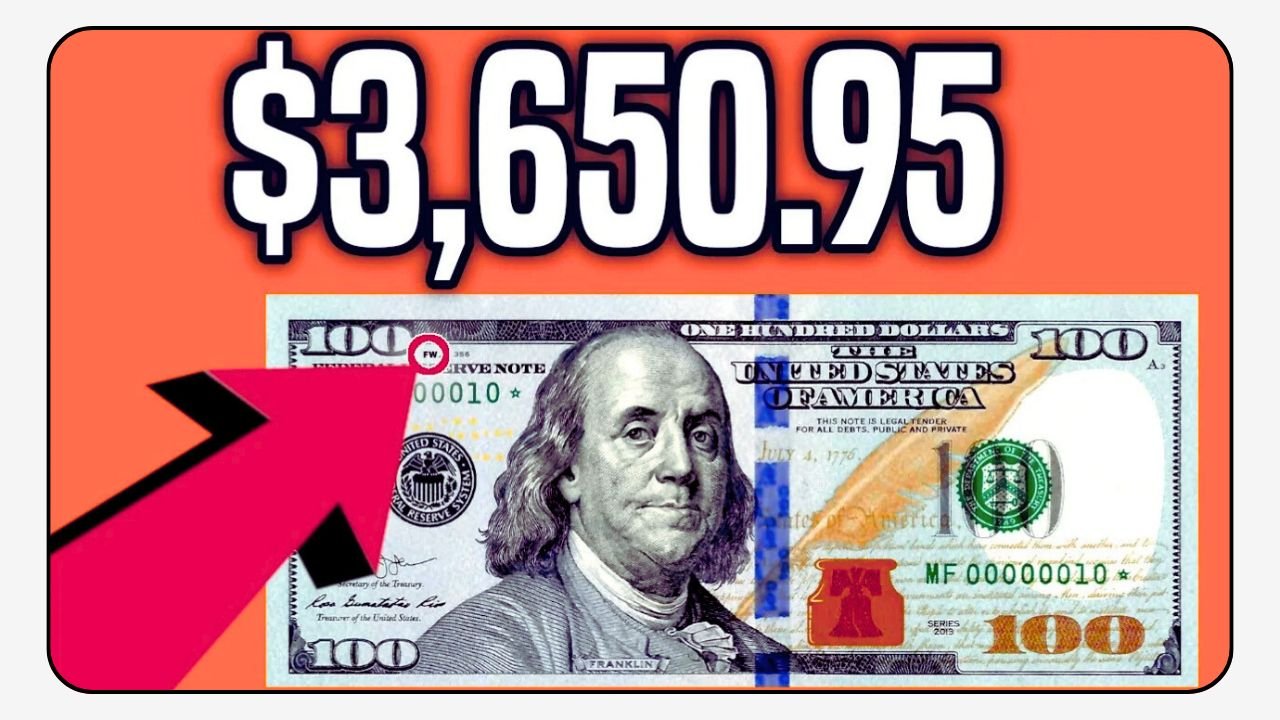$100 Bill: Have you ever checked your wallet for rare cash? A 2013 $100 bill might be worth way more than its face value due to a printing error. These special bills, known as “Star Notes,” have caught the attention of collectors and could make you rich. Let’s dive into what makes these bills so valuable, how to spot them, and what to do if you find one.
What’s a Star Note?
Star Notes are replacement bills printed by the U.S. Bureau of Engraving and Printing when regular bills get damaged or misprinted. They have a small star symbol at the end of their serial number, like “MB12345678*”. In 2013, a batch of these $100 Star Notes became extra special because of a rare mistake. The error caused some bills to have duplicate serial numbers, which is a big deal in the world of currency collecting. Only a small number of these error bills exist, making them highly sought after.
Why Are These Bills So Valuable?
Collectors love rare items, and these 2013 $100 Star Notes are no exception. Normally, every bill has a unique serial number, but the 2013 error led to some bills sharing the same number. This mistake makes them unique and drives up their value. Some of these bills have sold for thousands of dollars at auctions, with prices ranging from $600 to over $15,000, depending on their condition and serial number. The rarer the bill, the more collectors are willing to pay.
How to Spot a Valuable 2013 $100 Bill
Want to know if you’re holding a treasure? Here’s what to look for:
- Check the year: The bill must be from 2013. Look at the date printed on the front.
- Look for the star: The serial number, found on the right side of the bill, should end with a star (*).
- Note the serial number range: The most valuable bills have serial numbers starting with “MB” and falling between MB00000001* and MB09600000*.
- Check condition: Bills in crisp, uncirculated condition are worth more than worn ones.
Here’s a quick guide to help:
|
Feature |
Details |
|---|---|
|
Year |
2013 |
|
Serial Number Prefix |
Starts with “MB” |
|
Serial Number Range |
MB00000001* to MB09600000* |
|
Star Symbol |
At the end of the serial number |
|
Condition |
Uncirculated is best |
What to Do If You Find One
Found a bill that matches the criteria? Don’t spend it! First, verify its authenticity with a currency expert or at a local coin shop. You can also contact professional grading services like PCGS or PMG to evaluate its condition and value. These services will seal the bill in a protective case and give it a grade, which can boost its worth. After that, you can sell it through an auction house, online marketplace, or to a private collector. Be sure to research recent sales to get an idea of its market value.
Why Collectors Are Crazy About These Bills
The thrill of finding a rare 2013 $100 Star Note is like striking gold. Collectors are drawn to the story behind the printing error and the limited number of bills in circulation. Some estimates suggest only a few thousand of these error bills exist, making them a hot item in the collecting world. Plus, the $100 bill’s redesign in 2013, with its new security features like a 3D ribbon, adds to its appeal. Even if you don’t have one, checking your cash is a fun way to join the hunt.
Next time you get a $100 bill, take a second to check it. You might be holding a small fortune. With just a few key details—year, star, and serial number—you could uncover a rare gem. So, dig through your wallet, ask friends to check theirs, and maybe you’ll be the next person to cash in on this hidden treasure.

